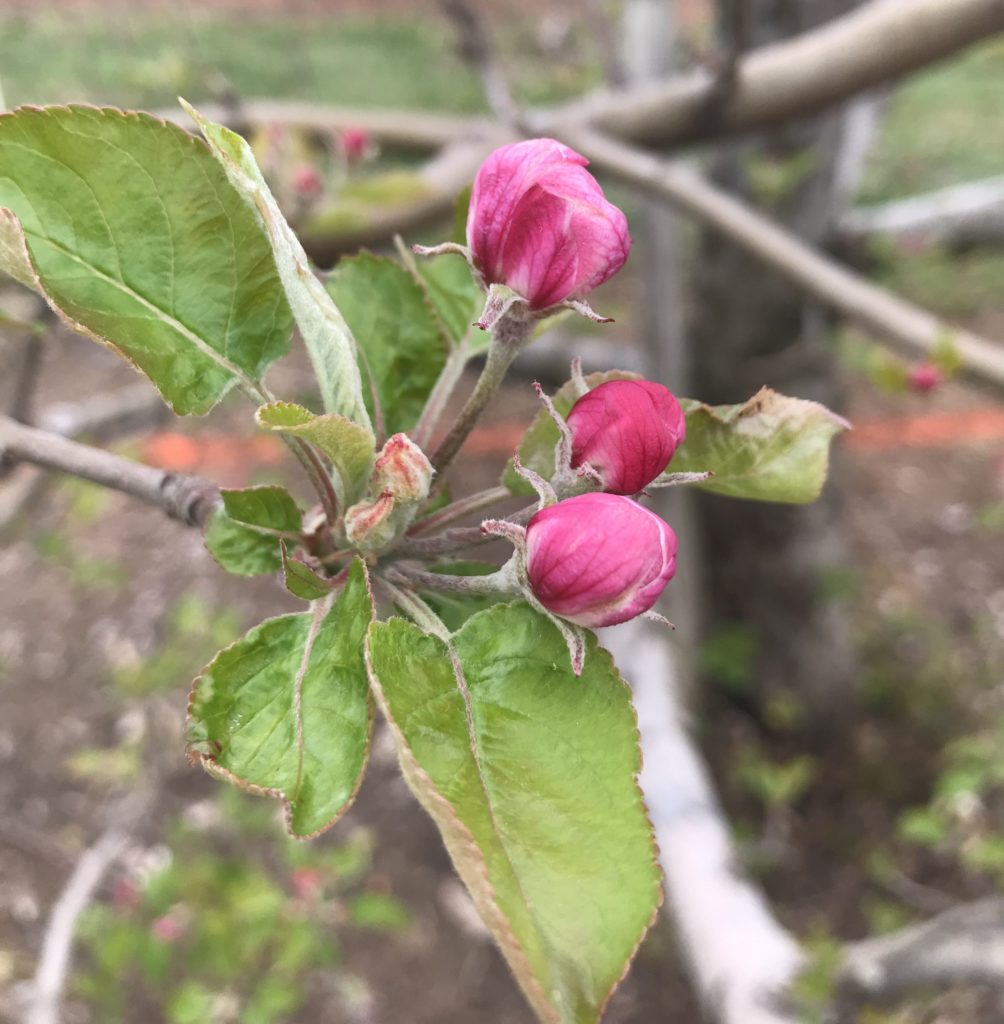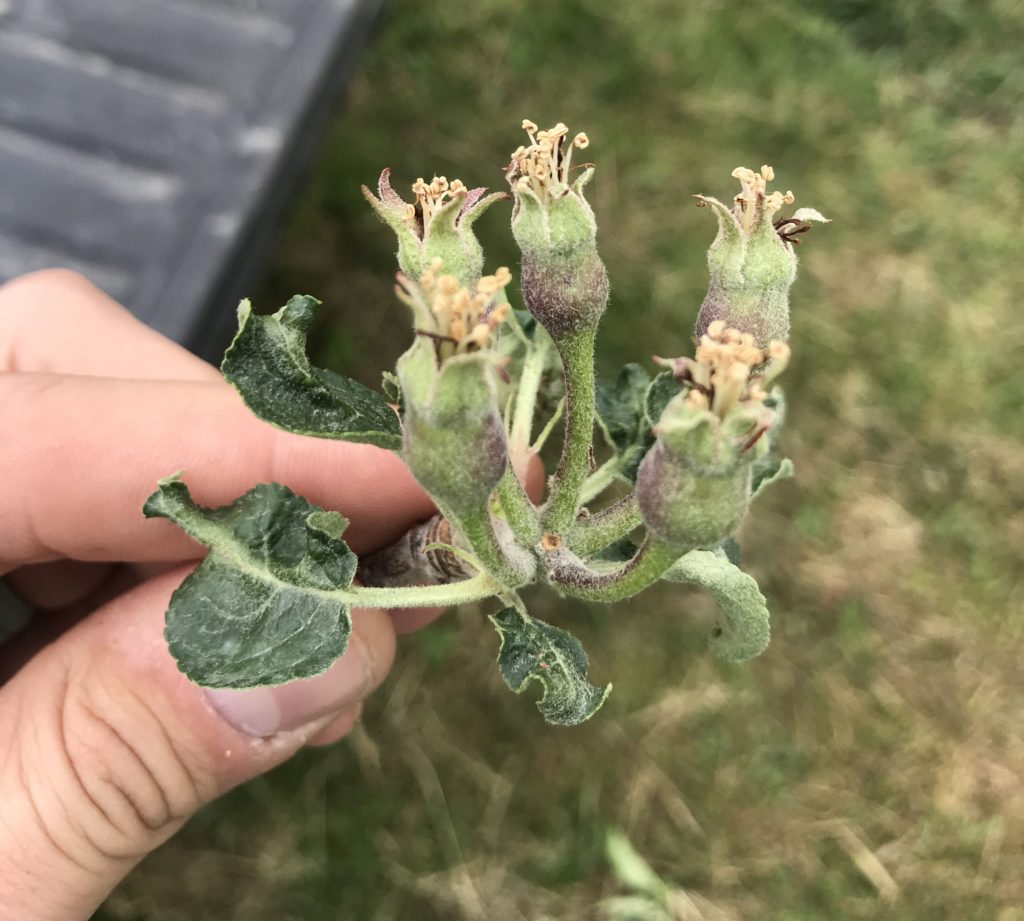Post-Bloom Thinning Update: 4.28.19
go.ncsu.edu/readext?599504
en Español / em Português
El inglés es el idioma de control de esta página. En la medida en que haya algún conflicto entre la traducción al inglés y la traducción, el inglés prevalece.
Al hacer clic en el enlace de traducción se activa un servicio de traducción gratuito para convertir la página al español. Al igual que con cualquier traducción por Internet, la conversión no es sensible al contexto y puede que no traduzca el texto en su significado original. NC State Extension no garantiza la exactitud del texto traducido. Por favor, tenga en cuenta que algunas aplicaciones y/o servicios pueden no funcionar como se espera cuando se traducen.
Português
Inglês é o idioma de controle desta página. Na medida que haja algum conflito entre o texto original em Inglês e a tradução, o Inglês prevalece.
Ao clicar no link de tradução, um serviço gratuito de tradução será ativado para converter a página para o Português. Como em qualquer tradução pela internet, a conversão não é sensivel ao contexto e pode não ocorrer a tradução para o significado orginal. O serviço de Extensão da Carolina do Norte (NC State Extension) não garante a exatidão do texto traduzido. Por favor, observe que algumas funções ou serviços podem não funcionar como esperado após a tradução.
English
English is the controlling language of this page. To the extent there is any conflict between the English text and the translation, English controls.
Clicking on the translation link activates a free translation service to convert the page to Spanish. As with any Internet translation, the conversion is not context-sensitive and may not translate the text to its original meaning. NC State Extension does not guarantee the accuracy of the translated text. Please note that some applications and/or services may not function as expected when translated.
Collapse ▲Post-Bloom Thinning Update
The majority of post-bloom chemical thinning decisions will likely occur this week. The forecast calls for relatively warm temperatures (70’s to low 80’s) to coincide with the next several days of the post-bloom thinning window (~8-12 mm fruit size).
All post-bloom chemical thinners have good thinning activity with warm temperatures (>68 F) and all chemistries and all have potential to over-thin at excessively warm temperatures (mid-high 80’s). Additionally, warm temperatures can increase the susceptibility of trees to chemical thinners.
In 2019, several factors will further complicate chemical thinning decisions. Specifically:
Poor return bloom. In most blocks/varieties, return bloom has been satisfactory. However, despite aggressive/effective chemical thinning and use of return bloom programs in 2018, growers have reported poor/inconsistent return bloom in some varieties/blocks. I’ve heard multiple reports with Golden Delicious in particular.
Cold Damage. On multiple varieties, we’ve observed some bud kill/damage (Fig. 1). Presumably, this occurred during one of the cold snaps observed after bud break. In varieties affected, several fruitlets have already abscised or failed to develop during bloom. I’ve seen damage on most varieties that we grow in the southeast, but damage to Red Delicious has been the most significant. Where adequate return bloom was observed; however, there is generally a need for some chemical thinning.

Fig. 1. Flower bud mortality has been observed on multiple varieties and should be considered with chemical thinner applications.
In some cases, spur leaf damage is also present (Fig. 2). Spur leaves appear to be distorted (abnormal shape and wavy leaf margins), and there can be some visible browning/yellowing on the underside of the leaves. While this injury may seem minor, spur leaves play a very important role in fruit set and are the primary source of carbohydrates for fruitlets at this time. In addition, absorption of thinning chemicals by damaged leaves is likely greater than when compared to undamaged leaves. In short, I would exercise caution when thinning trees that exhibit injury to spur leaf tissue.

Fig. 2. Visible damage to spur leaves. Damage to these tissues can increase thinner uptake and subsequent thinning response.
Pollinator activity was somewhat limited during the bloom period due to cool weather and high winds, but there were a few nice windows for pollinator activity during the bloom period. Fruit set appears to be normal, in general.
I plan to provide carbon balance model updates in a post (4/30/19) across multiple locations.
Changes/Improvements to the Carbon Balance Model on NEWA
Based on a 17-year thinning study done by researchers at Cornell University, there will be some changes/improvements to the carbon balance model. To be clear: those of you that are using the carbon balance to make thinning decisions can continue to use the same model with no problems. This is still available on the NEWA website. For more information, see the following post from NEWA.
Crop removal on young trees
Complete crop removal on new/young plantings is an important step in orchard establishment. If fruit size is ~8-12 mm, the anticipated warm temperatures could provide an excellent window for de-fruiting young orchards using chemical thinners. There are several ways that this can be accomplished:
1) Post-bloom thinning. The current recommendation in the Integrated Orchard Management Guide for Commercial Apples in the Southeast is as follows:
2 oz. NAA (Fruitone L, Pomaxa, Refine 3.5 WSG) +1 lb carbaryl + 2 pint ethephon per 100 gallons. Applied at ~ 8 to 10 mm fruit diameter. Caution: Application can suppress vegetative growth for 3 to 6 weeks.
While the above combination is an effective method in crop removal, a potential disadvantage of this treatment is that it can stunt vegetative growth.
2) Post-bloom thinning. In other apple-producing regions, de-fruiting recommendations have shifted to use of materials that do not have negative effects on vegetative growth and development. If you are interested in trying an alternative method of crop load removal on young trees this year, please consider the following:
150 ppm 6-BA (MaxCel; Exilis Plus; Exilis 9.5 SC) + 1 quart carbaryl + 1 quart non-ionic surfactant per 100 gallons.



